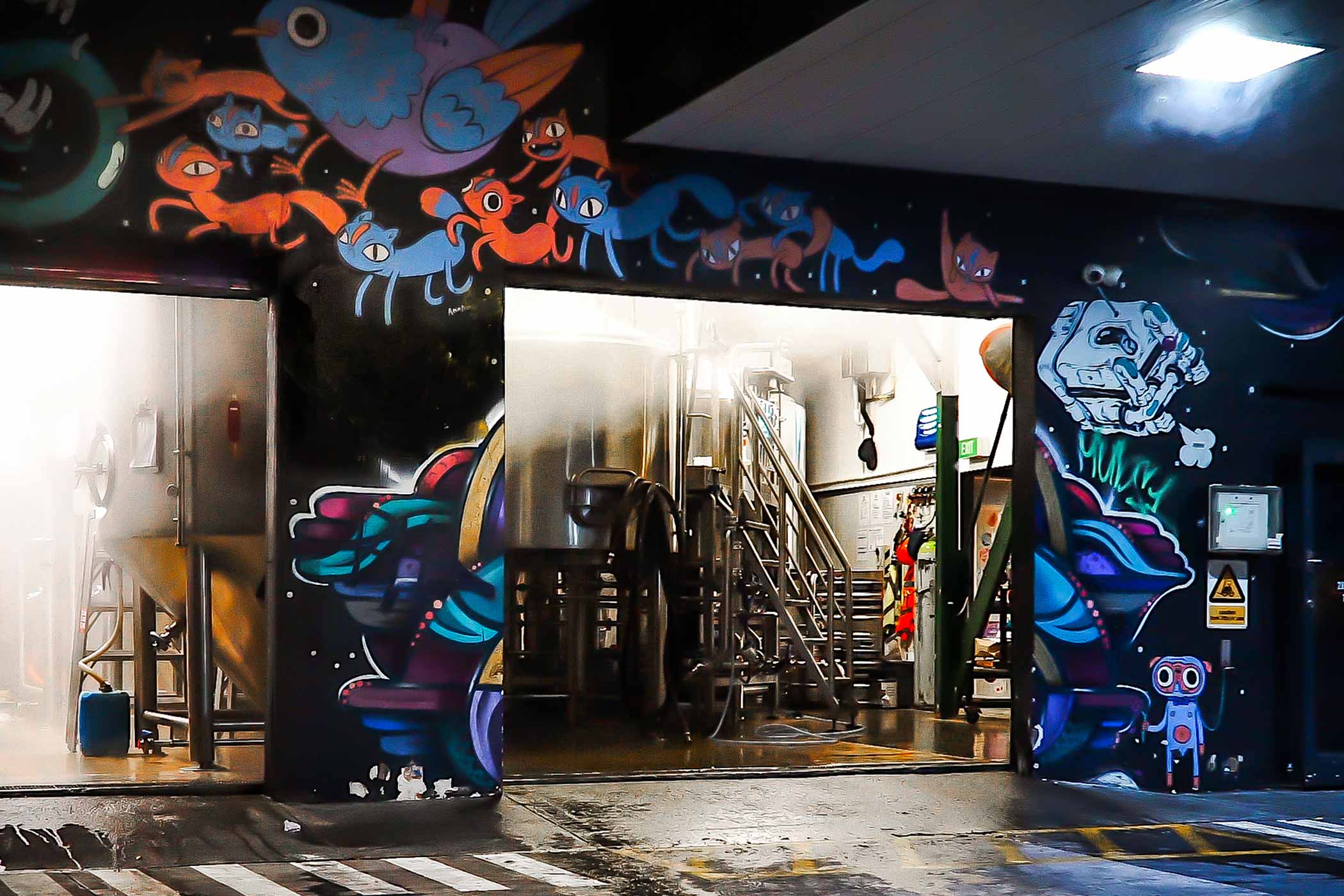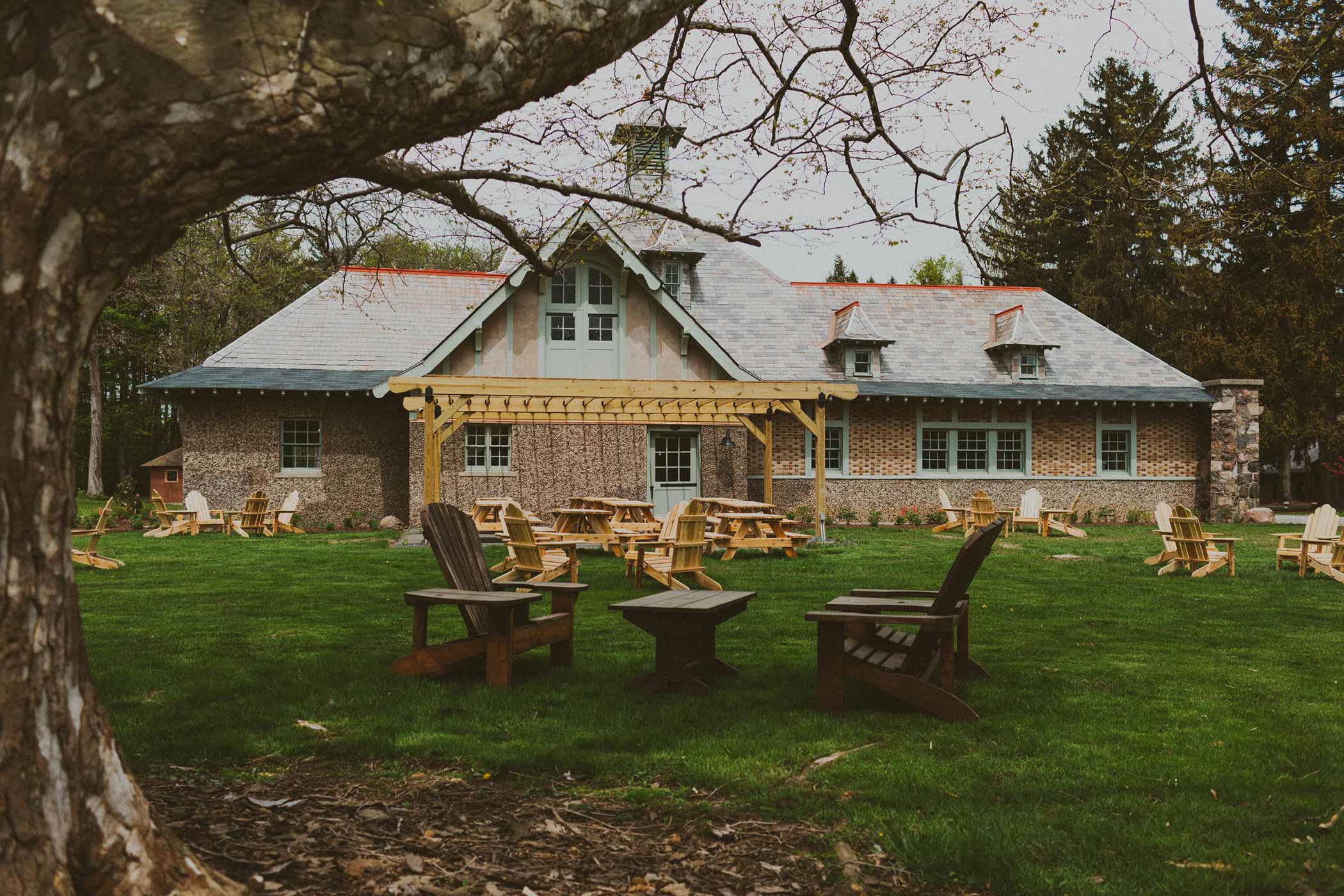Shop
Garage Project: The Mighty Brewery at the Bottom of the World
April's Hottest Articles:
Covered in sh*t, fenced in by barbed wire, graffitied to the gills, the old petrol station in Wellington, New Zealand, had seen better days when two locals decided to clean it up and start a brewery. Thirteen years later, what started as “the garage project,” brewing audaciously whacky beers, has become Garage Project, one of our “13 Best Breweries to Watch in 2024,” making some of the highest-rated beers in the world.
Fitting then that Garage Project Co-Founders Pete Gillespie and Jos Ruffell grew up humbly.
As neighboring families about five houses apart on the same street, Ruffell says Gillespie used to babysit him.
“We were like babies in the bath together,” laughs Ruffelll, who became best friends with Gillespie’s younger brother, Ian.
Years later, the two reconnected over a love for beer, and in a city at the bottom of the world, they decided to open a brewery that would put the capital of New Zealand on the craft beer map.
“I don’t think there are any other careers that people just get swept away in and throw away all sorts of perfectly good jobs so that they can brew beer,” says Gillespie, who spoke to me before going out to pick hops at Freestyle Hops, a farm Garage Project recently teamed up with to found a new hop research program. “It’s fascinating, isn’t it?”
Oh, it certainly is, especially when you learn just how much sh*t Gillespie and Ruffell cleaned, barbed wire they cut, and batsh*t crazy beers they brewed even to open Garage Project in the first place.
From PhDs to Opening Breweries
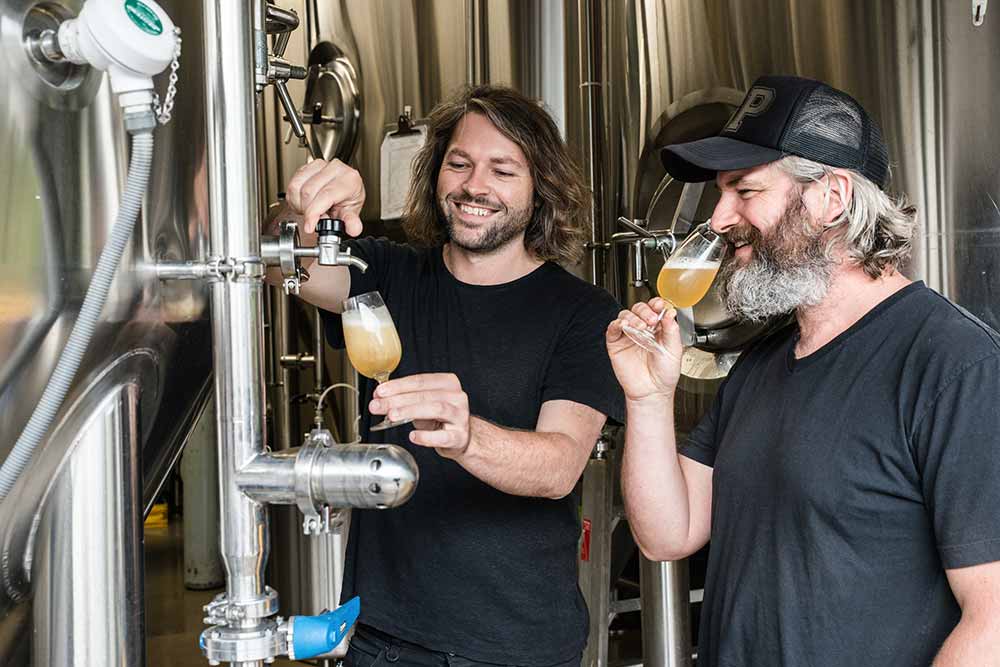
Photography courtesy of Garage Project
“Brewing—there is just something about it that gets under people’s skin,” says Gillespie, who used to help his grandfather homebrew as a young kid. “It’s more than a hobby; it’s an obsession.”
After finishing his PhD in cultural studies in Australia, Gillespie moved to England to pursue brewing, eventually taking his brewing career back down under.
But while working for other breweries, Gillespie says he always knew he wanted to start his own. “I just had that little itch,” he shares.
The grind had also started to wear on him. “I’d been banging my head against a brick wall,” he says, commuting 200 kilometers down to Syndey for work every day.
On a trip back home to visit his family in Wellington, his brother, Ian, and his brother’s best friend, Ruffell, straight up asked him: Why don’t you come here and open a brewery?
Ruffell, a video game developer, fell in love with craft beer after enjoying a Pliny the Elder while traveling to San Francisco for work. “I just got handed a pint of beer, and it kind of blew my mind,” he remembers. “Unlike anything I’d had before.”
Ruffell began scooping up as many interesting beers as possible on his travels, bringing them home to Wellington.
He calls reconnecting with Gillespie “total serendipity,” mashing one’s passion for drinking with another’s for brewing.
“When we got started, I had no experience other than just drinking,” Ruffell laughs.
But the two saw an opportunity to open a new craft brewery that no one had ever seen in Wellington.
Where Is All the Beer in Wellington?
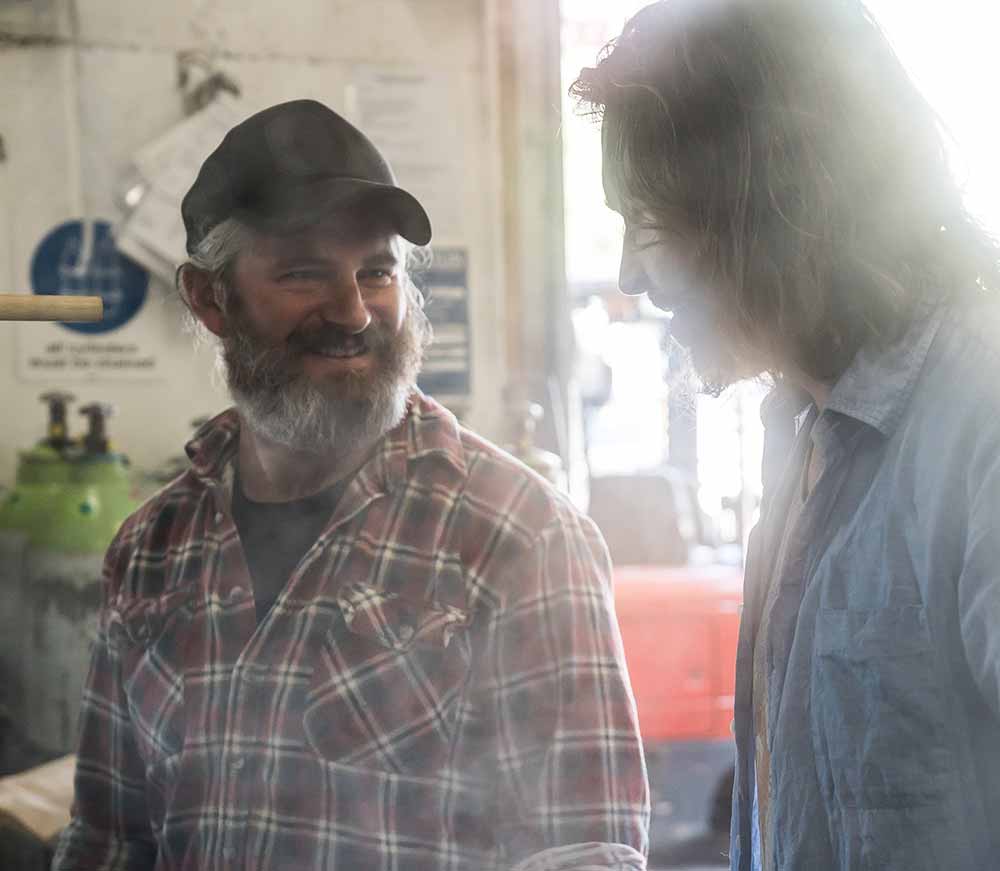
Photography courtesy of Garage Project
Although the capital of New Zealand, Wellington is only home to around 300,000 people.
“It’s a tiny little city, but it’s a city full of early adopters and people who want cool new things,” explains Gillespie.
Although people in Wellington consumed a little over half of the craft beer in New Zealand, Gillespie points out that no breweries actually existed in the city at the time.
While Wellington had great craft beer, it was all pretty safe—pilsners and porters, with only one or two new releases a year.
Gillespie and Ruffell saw an opportunity.
“I chucked everything in, sold my house, and moved my family over,” says Gillespie. “Bless them!”
Gillespie reached out to the council in Wellington, asking if they’d try to stop them. “They said, no, that sounds like a great idea!” recalls Gillespie, who also went to the customs and excise board and asked if they’d stop him, too. “They were like, no, that’s a great idea, just as long as you pay us!”
With the city and Gillespie’s and Ruffell’s families on board, only one piece was now missing.
Garage Project Starts in a…Garage
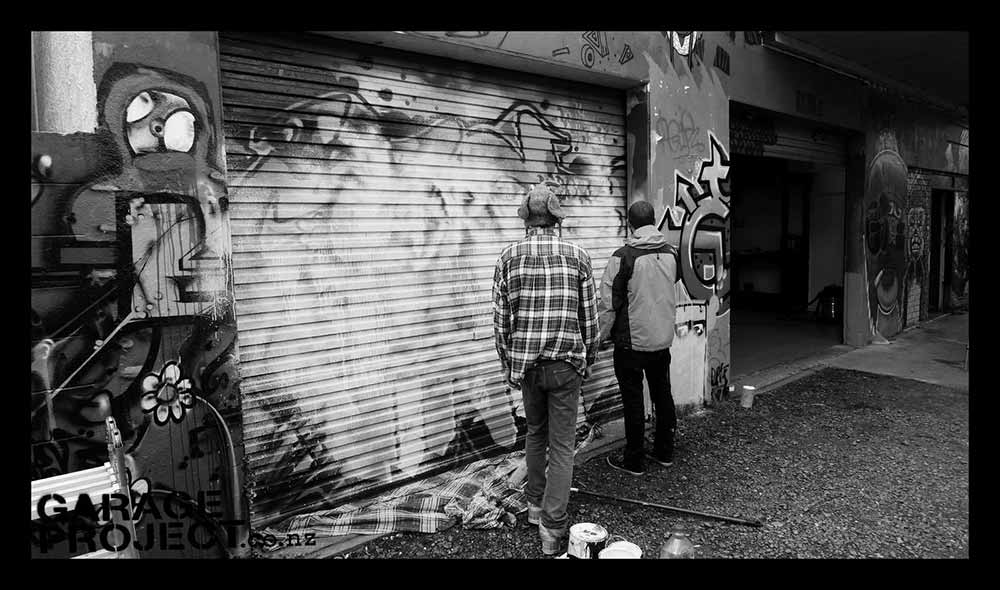
Photography courtesy of Garage Project
Serendipity seems to be a fitting word when telling Garage Project’s story.
Without a ton of start-up cash, Gillespie and Ruffell agreed to clean up an old gas station in the Aro Valley of Wellington in exchange for cheap rent for the first year.
“It had a barbed wire fence around it, it was covered in street art … and it was knee-deep in rat s**t,” says Ruffell, who doesn’t actually remember if they saw the location listed or just stumbled across it. “A real mess … [but] I think it was just the right place, right time.”
You couldn’t beat the location right in the soul of Wellington. “We wanted it to be a place where people could see, smell, and experience beer brewed in the heart of the city,” explains Ruffell.
After all the elbow grease they put into cleaning up the derelict garage, you’d think Gillespie and Ruffell would be too beat to brew.
Perhaps maniacally and haphazardly, they challenged themselves even further, cooking up a crazy scheme: For the first twenty-four weeks, they would brew twenty-four different beers.
“We were keen to do something different. … We wanted to do something remarkable,” says Gillespie. “What’s the point of just being the same as everyone else?”
Dubbed the 24/24 series, Gillespie and Ruffell started cranking out beer after beer on a tiny 50-liter Sabco BrewMagic kit.
To give you an idea of the microscopic scale here, Ruffell says that, for a long time, “My couch was the biggest thing in the brewing area!”
Sound crazy? Perhaps. But the idea had some merit.
“We realized that if we went with basically a comically small half-barrel system, it wouldn’t be economically viable, but it would allow us to take risks that we wouldn’t if we were brewing thousands of liters at a time,” Ruffell explains.
You know that scene in the Dark Knight Rises where Christian Bale’s character Bruce Wayne (aka Batman) can only escape an underground jail by scaling a perilous wall without a rope?
We might make a comparison here.
Ruffell describes the decision as terrifying. “We had to hold our breath,” he says. “We were just sort of eating off our savings.”
But it ultimately allowed them to push boundaries. The fast-paced, inventive iterating satisfied Ruffell’s video game development background. “We learned by doing new things all the time—new ingredients, new adjuncts, new things,” says Ruffell.
And each beer brewed with this balls-to-the-wall experimentation boosted the duo’s confidence, becoming a core part of Garage Project, a sort of pet name they all had for the brewery when it first started.
“We wrote down all these badass names that would have been terrible in hindsight,” recalls Ruffell, explaining they just kept going back to the first thing they wrote down: The Garage Project. “It was a kind of like Facebook thing: We just dropped ‘the.’”
The Madness of Brewing Twenty-Four Beers in Twenty-Four Weeks
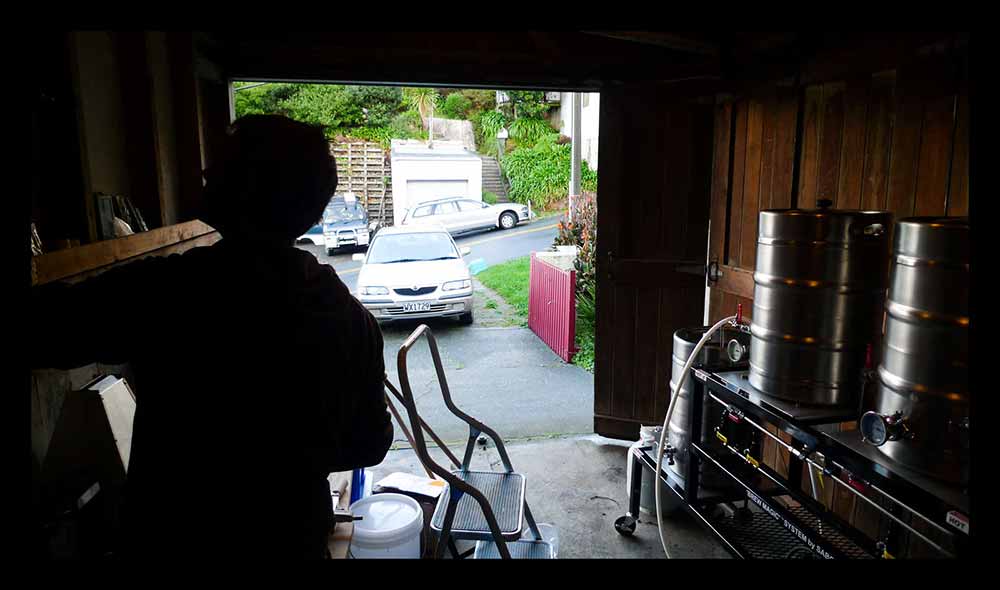
Photography courtesy of Garage Project
At the end of every week, Gillespie says they brought 220-liter kegs of a brand new beer down to “the pointy-end craft beer bar, where the intelligentsia liked to hang out.”
The now-closed bar, Hashigo Zake, became the home base for Garage Project. And little by little, word got out. “We got this cult following,” says Gillespie. People would pack this bar because if you didn’t get there at 5:00 p.m. to try the beer, you wouldn’t get it.”
These were beers never seen before in Wellington or the entire country, in fact.
For example, a saison conditioned on People’s Coffee green coffee beans (unroasted) called People’s Project no. 2. Appealing to Wellington’s standout coffee culture, the beer still proved pretty divisive.
Ruffell shared the original description Gillespie wrote:
Perhaps our most experimental and avant-garde offer yet. A strong, spicy golden Saison infused with green unroasted coffee beans. Inspired by the pungent, earthy aroma of green coffee beans, this beer is sure to polarise drinkers. Truly unique, No. 2 might be our finest hour or our greatest failure. Try some and decide for yourself.
Ruffell says they set up a mailbox for people to drop in little coasters, sharing what beers they liked and didn’t like.
“That one was an incredibly polarizing beer,” he says. “It was like five stars and one star.”
But in a way, this beer best encapsulates Garage Project’s trajectory.
“It’s pretty easy to make a beer that offends nobody,” says Ruffell. But if you make something so unique that it causes passionate discussion and debate, you’ve started something beyond the glass. Something that you’ll potentially remember forever—whether good or bad.
Anarchy Against the Beer Machine
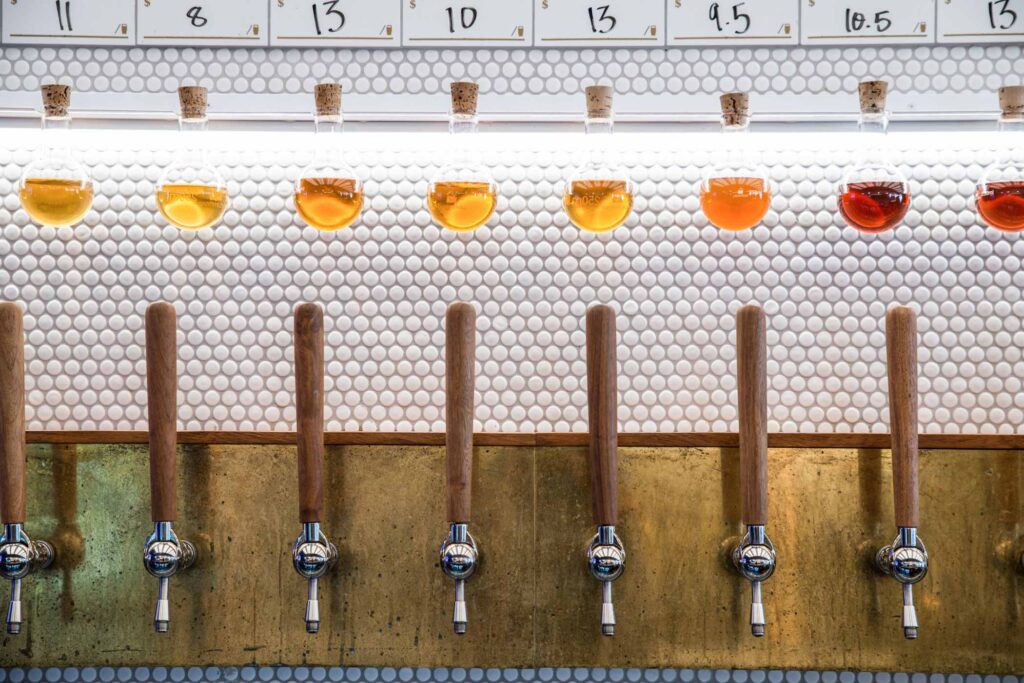
Photography courtesy of Garage Project
Today, Garage Project’s beers are almost always conversation starters, polarizing pokers, or just plain batsh*t crazy projects.
“Our beers are like Spartan babies,” says Gillespie. “We throw them out into the harsh mountainside … and the tough ones survive and thrive.”
Gillespie lives for that dichotomy. “I love the collision of high and low culture,” he says. “Anything that f**ks with people’s expectations.”
Ruffell lays it out a little more innocuously, saying that the goal is to make “playful, progressive beers with unique flavor combinations.”
For instance, La Calavera Catrina, an assertively spicy lager with habanero chili, rose, and watermelon.
Or Umami Monster and Pickle Beer. “People love it, and then some think it’s disgusting,” laughs Ruffell. “We learned never to be afraid of putting out something quite distinct.”
We’re not just talking about ingredients, either. If you compared brewing to a coloring book, Gillespie and Ruffell aren’t just drawing outside the lines. It’s like they’ve taken the designs on the page, lifted them, wholly twisted and contorted them, and then said, f**k it, we don’t even need to add color.
For instance, for a beer called Resonance, Gillespie got the Royal New Zealand Orchestra conductor to create a playlist specifically for yeast fermentation. “Romantic music for when the yeast was propagating and growing, then wild music during fermentation, and calm stuff during conditioning,” he says.
Gillespie said they dropped an underwater speaker right into the fermenting beer. He says the beer attenuated ten percent more than their average yeast attenuation, and they felt an even more enormous flavor output for the small dry hop. “That makes sense, doesn’t it?” questions Gillespie. “Because if it’s vibrating, it’s breaking up the hops, right? It’s peer-reviewed bro-science!”
A follow-up version, a black IPA called Dark Resonance, benefitted from an eleven-day death metal playlist. “That was crazy, cool, and fun,” shares Gillespie.
The Wild Willy Wonka World at the Wild Workshop
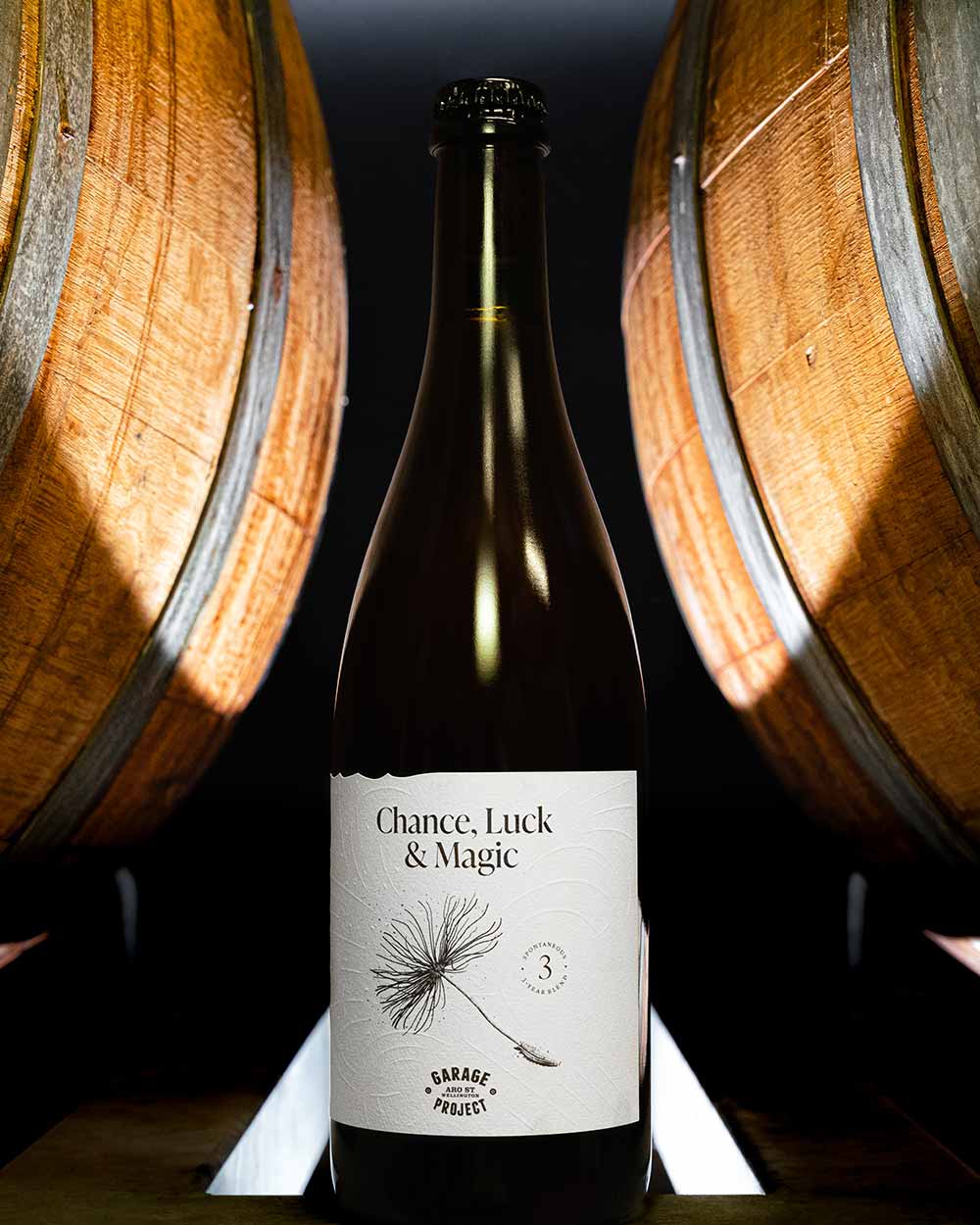
Photography courtesy of Garage Project
You’ll find Garage Project fully flexing its muscles at the Wild Workshop, opened in 2020, just a five-minute drive from the original petrol station.
There, you’ll enjoy beers like Chance, Luck, & Magic, a gose-style blend of three (sometimes four-year-old) spontaneous beers.
“We pump it into this coolship, throw open the windows, and just let in all this lovely inner city funk before dropping it straight into big 500-liter puncheons,” explains Gillespie.
The beer’s name perhaps tells you all you need to know about Garage Project. While working for one of the mega breweries in Australia, Gillespie says they forced him to take a psych evaluation.
“The test came back saying I had an overreliance on chance, luck, and magic,” he laughs. “I was like, that’s amazing, right? And they said, ‘No, I’m afraid it’s not.’”
Gillespie tucked that moment away for a day when he could throw it back in the corporate centaur’s face.
“At the end of the day, it’s chance, luck, and magic that produces this wonderful f**king beer,” he says.
A little bit of a finger to the lifeless megacorps that suck the lifeblood out of collective creativity, Chance, Luck, and Magic is just one example of the beers at the Wild Workshop.
“You’re releasing the reins to some extent, and all sorts of wonderful, terrible things happen,” says Gillespie. “At the Garage, we do the most inventive and interesting brewing. … But then, at the Wild Workshop, I can go and revel in a kind of anarchy.”
An anarchy against the machine. “Beer should be like no fucking rules,” says Gillespie. “[Just] have fun.”
Fun With Foraging Flowers
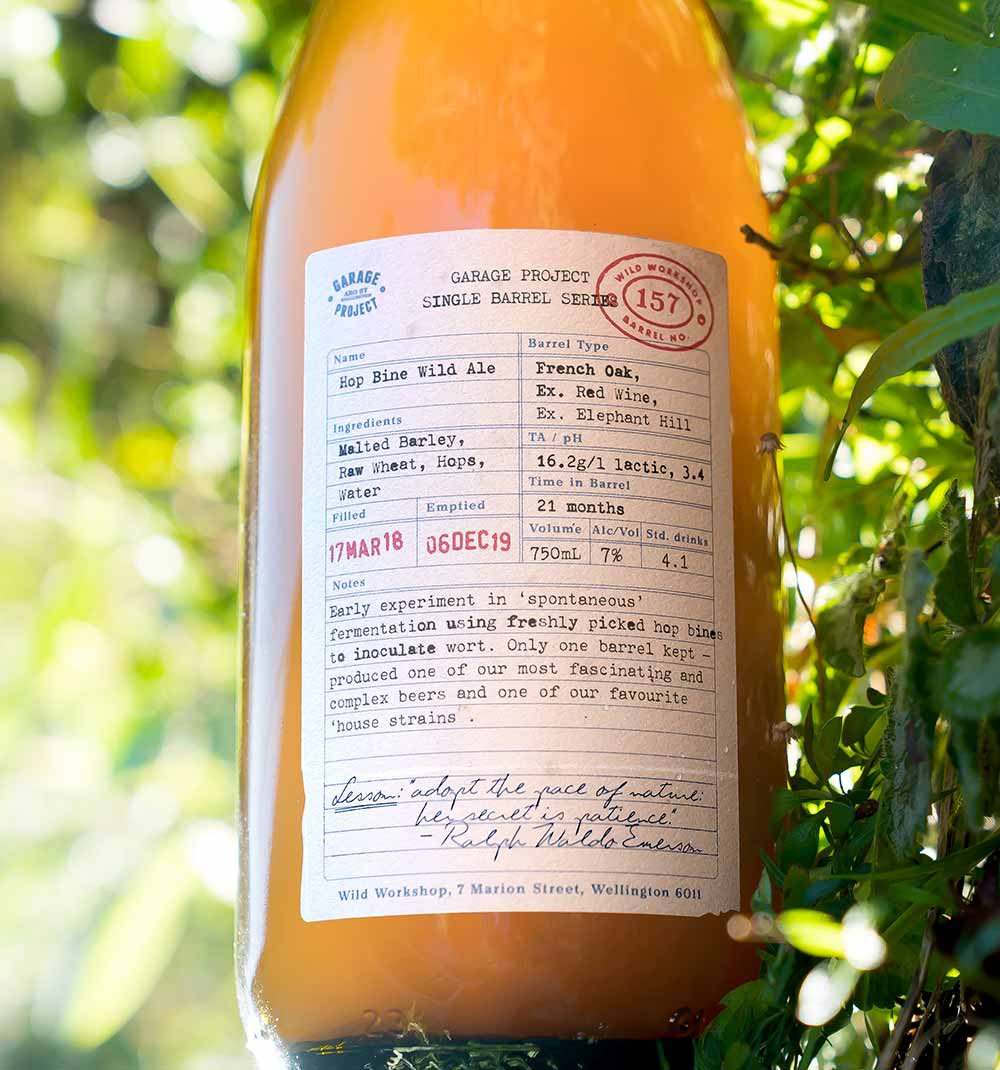
Photography courtesy of Garage Project
One of Gillespie’s favorite projects at the Wild Workshop includes beers brewed with foraged flowers and plants.
The first featured the Manuka flower, a native New Zealand plant with little star-shaped flowers. “In the middle is a little cup of nectar filled with the most elaborate, diverse microbiome,” says Gillespie, who met someone many years ago doing their PhD on those yeast and bacteria colonies inside the flower. “At the time, I was like, f**k, I wonder if you could ferment beer with what’s in there?”
Since then, Gillespie says he got a bit carried away, brewing with any flower he can find—or even fresh hop bines, which he threw straight into the wort before fermenting.
“It was a slightly weird one,” recalls Gillespie. “A bit of the bine floated to the surface and got moldy. … The wort developed this intense aroma that could only be described as minestrone soup.”
Every brewer at the Wild Workshop urged Gillespie to throw the wort away. But Gillespie wouldn’t. “We can’t throw it out; it’s really interesting,” he told them, compromising by saving just one barrel. “No shit, it was the most f**king amazing beer we had produced at that point!”
With that beer, called Single Barrel Series No 157, the magic of biotransformation exploded. “Things that smelled like baby vomit became pineapple. Things like minestrone ended up being incredibly complex and wonderful; it was mind-blowing,” says Gillespie. “I never let the brewers live that down. We should have saved the whole f**king lot, shouldn’t we?”
Although only one barrel survived, Gillespie says all was not lost. They saved the dregs, creating their house yeast strain. “So it lives on,” he says. “I’m not blowing smoke. I made a lot of bad decisions, but that was probably a random good one.”
Extravagant, Extraordinary, Ordinary
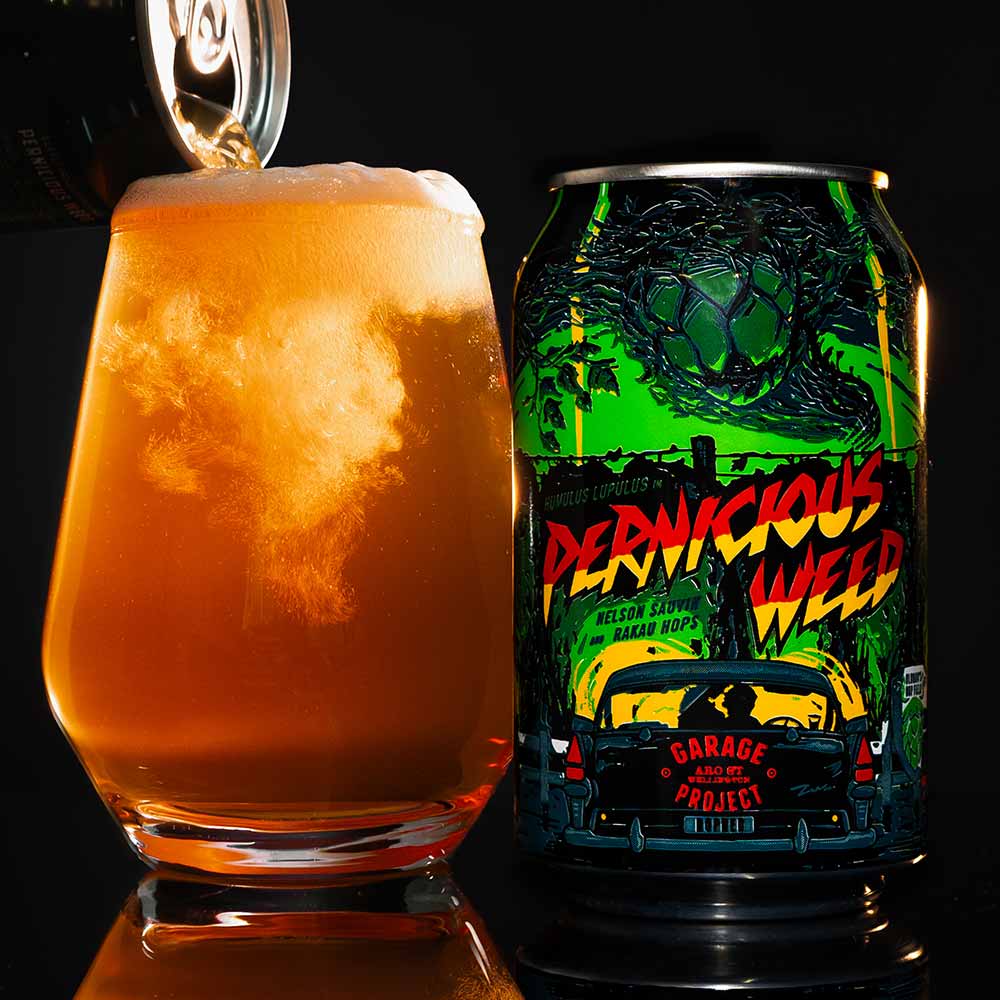
Photography courtesy of Garage Project
Although Garage Project made its name on the extravagant and the extraordinary, they do the ordinary pretty well, too.
While Gillespie says they’ve never been very good at “getting behind our heroes and trying to push them,” one beer in particular has steadily nosed ahead. Pernicious Weed, a mainstay double IPA that Ruffell calls a bit of homage to Pliny the Elder, the beer that changed his life.
Instead of Pacific Northwest Hops, though, Pernicious Weed includes New Zealand ones—Nelson Sauvin and Rakau.
“Nelson Sauvin has green grape, winey [notes], and when you mesh it with Rakau, I love it because it took it to a very bright citrus, grapefruit spot with a little weedy undernote,” says Gillespie.
“That’s a cult favorite to this day,” says Ruffell. Even though the beer came out of Garage Project’s insane twenty-four-beers-in-twenty-four-week brewing spree, the recipe has remained unchanged over the last thirteen years.
“Pernicious Weed just keeps gently growing and ticking along,” says Gillespie.
Mainly because it’s a testament to the integrity of New Zealand hops.
Over the last few years, investing in New Zealand hops has become a big focus for Garage Project.
They became an owner of one of the newest hop farms in the country, which will be the single largest farm in New Zealand once the build-out finishes. Located in the Nelson Lakes, a whole new hop-growing region two hours south of the typical Nelson region, the farm put out its first small-scale commercial harvest last year with only two hops but will go through a proper harvest this year with Nelson Sauvin, Riwaka, Motueka, Rakau, Southern Cross, and Cascade.
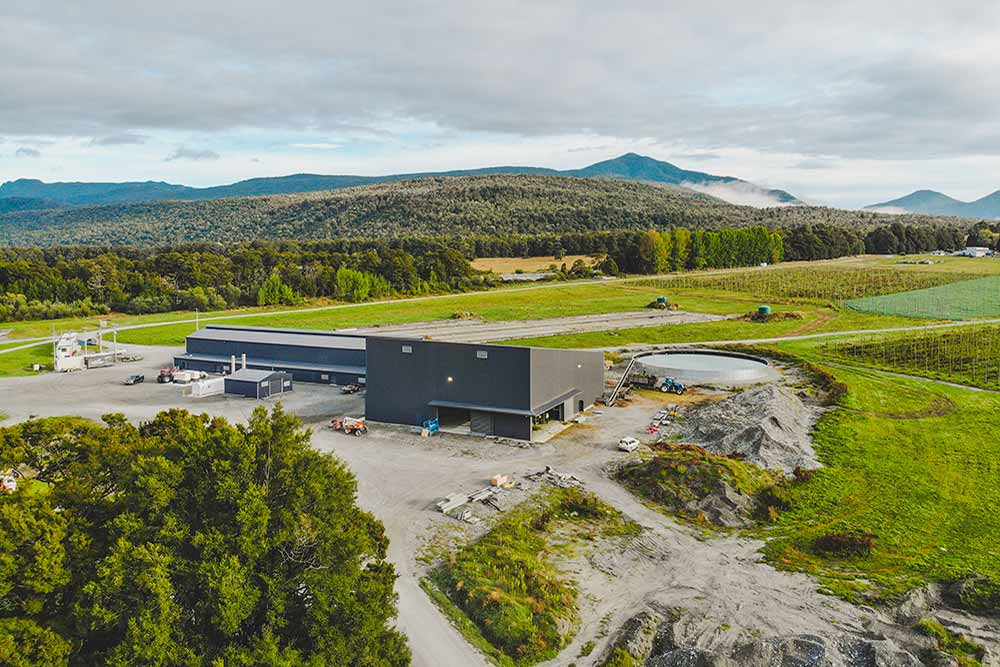
Photography courtesy of Garage Project
They also founded a hop research program with Freestyle Hops called Hāpi Research, a government-backed project to help develop the hop industry in New Zealand.
Through Garage Project’s own breeding, Ruffell says they’ll get to play with several experimental hops this year. And while these varietals will be available for other breweries to try. “We get a peek under the hood before anyone else,” says Ruffell.
Hops like NZ02, which Ruffell says, in sensory, have expressed a really unique, intense passion fruit.
From hops to flowers to bines to beers, Garage Project’s constant quest for creativity has made a mighty impression like no other brewery in New Zealand.
And not just with beer.
Pouring on the Crazy
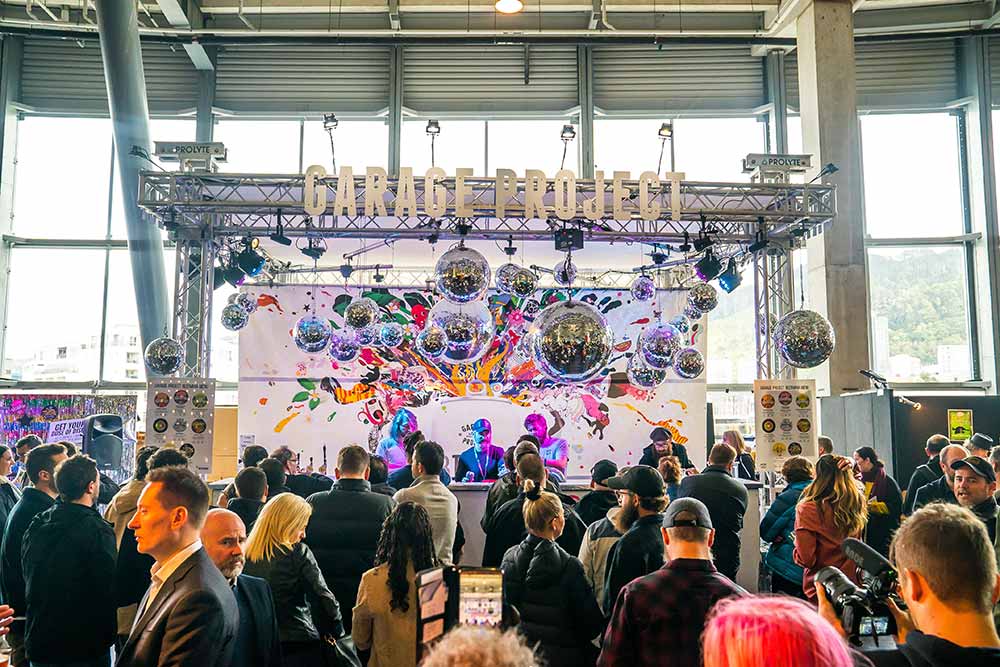
Photography courtesy of Garage Project
While beer festivals have become ubiquitous, we guarantee that if you find Garage Project at one, you’ll see something you’ve never seen before.
The brewery doesn’t just pour beer; they serve one-of-a-kind concoctions.
Gillespie says Garage Project thrives on providing extravagant, over-the-top concepts, which he equates to the equivalent of “stadium rock.”
“We just want to do mental, batsh*t stuff,” he says.
For instance, the Traffic Light, a reference to a sh**ty New Zealand drink with green at the bottom, amber in the middle, and red at the top.
“Everyone remembered that from when they were kiddies,” says Gillespie, who layers an over-the-top, super-sour, super-sweet green beer on the bottom, a yuzu one in the middle, and a raspberry one on top. “It is f**king mental.”
Or a Yuzu Sunrise, a two-tone beer with a yuzu base and raspberry one on top. “The densities are so different that it will stay separate even if you wiggle your glass around.”
Ruffell says one of the most popular is the Flat White, a strong, roasty coffee stout topped with a layer of nitrogenated lactose vanilla cream that looks like milk. “It’s basically a fancy black and tan,” says Ruffell. “But it tastes great.
At the Firestone Walker Invitational this past June, I saw Ruffell work his magic in person, constantly under a barrage with the longest line of the entire event, miles deep for hours.
At the front, Ruffell crewed the station in his trademark wide-brimmed hat, doling out each drink with a smile.
The texture of the Flat White stood out to me more than anything; luxuriously velvety, like sipping the froth right off a cappuccino.
On the opposite end of the spectrum, the Yuzu Sunrise changed as I drank it, like Sour Patch Kids, sour…then sweet.
Unlike anything I ever had, it was certainly worth standing in line for (even though Ruffell snuck me and the team all a couple of tasters behind the booth ????).
Garage Project has no limits, playing around with everything from beer slushies to soft serve to intentionally foamy beers.
Cheers to Thirteen Years
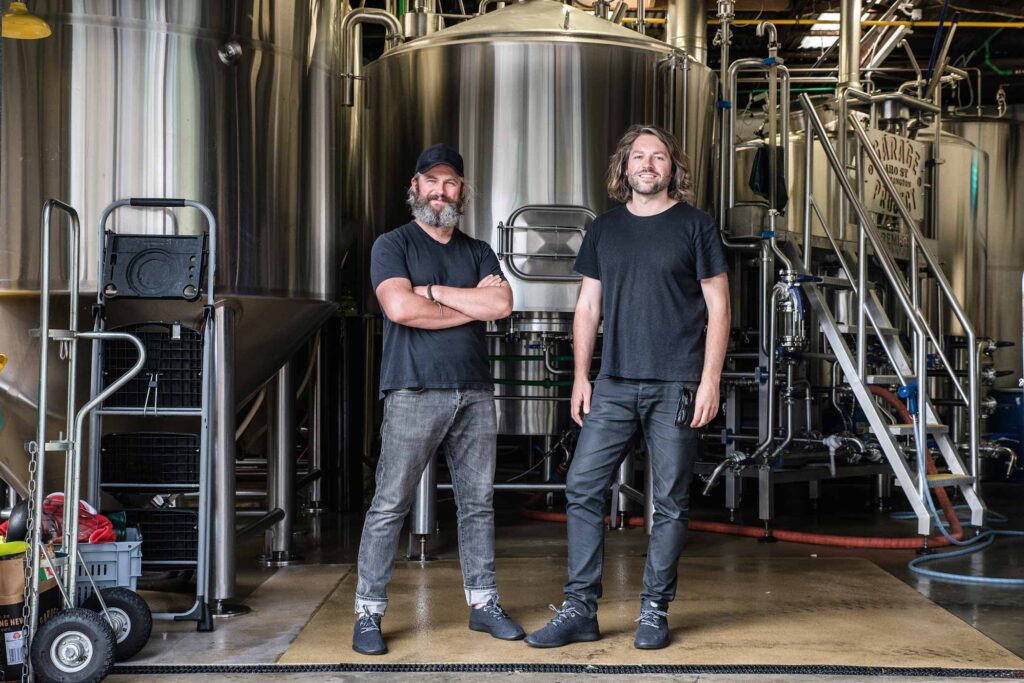
Photography courtesy of Garage Project
What started as the Garage Project in a dilapidated, run-down petrol station has become probably the most successful and well-recognized brewery in New Zealand.
Look up the top-rated beers in New Zealand on Untappd, and the first top eleven belong to Garage Project. “I think we’re over a million check-ins now,” says Ruffell. “Yeah, it’s kind of crazy.”
Over the last thirteen years, the brewery has expanded from that s**t-covered garage to three locations across Wellington. The original spot includes a twenty-barrel brew house with 7- to 100-bbl fermenters. “We do a lot in a small space,” says Ruffell. A cellar door opens for takeaway beers, and across the street is a full sit-down taproom (you’ll find one in Auckland, too).
A five-minute drive away from the brewery, you’ll find that Wild Workshop. In 2017, Garage Project signed on as a partner in B Studio, the fifty-hectoliter German Krohns brewhouse where you’ll find the majority of their production volume for core beers.
“Over the years, I’ve had pinch-me moments of getting to work with, rub shoulders with, and pour beer alongside those breweries that inspired us,” says Ruffell.
Like Garage Project’s very first collaboration beer with a cult Norwegian brewery called Nogne-O. They sent the hand-bottled beer away to Australia’s biggest beer competition—Australian International Beer Awards (AIBA)—where it “won champion specialty beer, beating out Utopias and all sorts of crazy beers,” says Ruffell.
One of many awards Garage Project has racked up over the years, Gillespie and Ruffell never let the attention go to their heads.
Perhaps more incredibly, their passion and creative inspiration have never waned.
“I don’t know what the future holds … [but], life is exciting, isn’t it, Grace?” Gillespie told me with a wry smile as he signed off to go walk through a bunch of hop fields. He seemed just as excited to go pick hops as he has for the last thirteen-plus years.
“It’s hugely satisfying and rewarding,” says Ruffell. “We’re just a tiny little brewer at the bottom of the world.”
Well, honestly, not anymore. But Gillespie and Ruffell will never tell you that, so hopefully, they won’t get too mad at us if we make one little change: Garage Project is now the mighty brewery at the bottom of the world.

